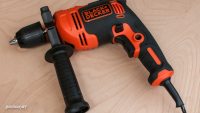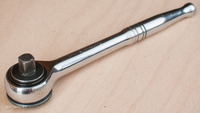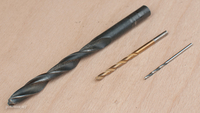Clogged EGR Pipe

Updated:
If you decide to blank your EGR valve, first check if your valve includes an airflow sensor. If the answer is yes, you may need to drill a small hole (about 4mm) in the blanking plate to let some air in, otherwise the ECU might see the lack of airflow as a dead sensor, leading to error codes and possibly reduced power and other operational limitations.
Blanking the EGR valve may be a technical exam fail in your area, so if you want to do it just for performance and economy reasons, keep all the parts, in case you need to temporarily refit them in order to pass the exam.










During the mk3 build, I didn't use Burt very much, so when it came time to take the technical exam, it wasn't a pleasant surprise to see a puff of smoke from the engine bay* and a huge plume from the exhaust pipe**. This is never good news. Needless to say, I said some things I can't repeat here due to the family-friendly content policy.
Two things happened and they both need to be addressed.
* What was that one-time black cloud from under the hood?
** What's causing that tail pipe to smoke like Willy Nelson?
I killed the engine and opened the hood to take a look. Nothing obvious at all. Everything looked fine. The smoke had seemed to come from the fuse box, so I checked all the fuses and wiring and it all looked fine. It was going to need some investigating. And I did that over here.
For the purpose of this article, I will focus only on the smoky exhaust.
With the engine running, a steady stream of smoke could be seen in the mirror. A light touch of the gas pedal, and the street no longer could be. That was unusual for Burt, although the last emissions test had been borderline, so I had been expecting something to go. But this smoke had a slightly blue tint, which means oil is burning, and that's the worst kind of news, because burning oil usually means one of the following joyous scenarios. And since the smoke didn't go away after a 40 minute drive around the ring road at 55mph, it was going to need investigation.
At this point, the options are:
1. Cracked cylinder head
2. Blown head gasket
3. Damaged piston ring(s)
4. Damaged cylinder wall
All of these are disastrous! With the exception of option 2, we're looking at an engine rebuild. Option 2 is also pretty gosh-darn inconvenient.
However, I was glad to find it out there was a hidden fifth option, because it's a much easier fix...
It's to do with the EGR (Exhause Gas Recirculation) system. The irony of this system is that, theoretically, passing exhaust gas through the engine for a second time ensures a more complete burn, resulting in less pollution. But in the real world, passing a rapidly-cooling gas through a combustion chamber lowers the chamber temperature and causes the incoming fuel to burn less efficiently. So, the EGR system actually kind of creates the problem it's supposed to solve. But that's politics.
Anyhoo... As you will have, no doubt, noticed, exhaust gas is disgusting. Just imagine funneling that gas down a pipe and think how that pipe is likely to look on the inside, after thousands of miles of this. Ok, now imagine clogged arteries. Now you're getting the picture (sorry for the mental image).
When that pipe gets so full of exhaust tar that there's no room left for the gas to flow, but the engine keeps pumping gas down it, anyway, what do you think will happen? Well, something's gotta give!
And in my case, it was this pipe:

It's the pipe that delivers that exhaust gas back to the EGR valve, and that's where I found a ton of smoke billowing out whenever the gas pedal was pressed. I needed to recruit a pedal-presser to find that out because Burt has electronic throttle control, so there's no throttle cable to tug on from the engine bay, which is why I never found the source of the smoke on my own. And having identified the source, it became obvious what had given up. I removed the pipe and successfully located the leak. It's subtle, but you'll spot it.

Warm... Warmer... There ya go!
So now what?
Two things to note:
1: Replacement EGR pipes cost about 70 times what they should cost.
2: The pipe bone's connected to the... inlet manifold bone. Yep. Better have a little poke about in there and see if there's any- Good lord! It's like a coal mine in there!

The exposed inlet ports after a good wipe down with break cleaner.
The entire manifold was thick in soot and it took an hour to clean it with rags and brake cleaner, and no, the neighbors were not happy about the mess on the road. The resulting tar puddle took a further 20 minutes to clean up. I couldn't take any pictures of the cleaning process because my hands were so dirty, I'd still be cleaning the camera now.

After a good effort, the inlet manifold lets things in again.
Right, we've discovered the problem and refused to pay 250 euros for less than a meter of pipe. So how do we get running without it? Well, without it. We just have to stop the exhaust from piling out the side of the engine and cover the EGR valve to keep inlet pressure up, and we're golden. And that's when the local suppliers let me down in a big way. Nobody, and I mean nobody, had blanking kits for my van. But there was a store around the corner that carried sheet steel and metal cutters. You see where I'm going with this.
Draw round that bit... Drill here... Drill there... Snip, snip, snip...

Introducing Burtmanufacturing's EGR blanking kit.
I just placed two of each of these blanking plates (to make up the thickness of the pipe joints) in the brackets that had previously held the EGR pipe, and screwed them up nice n tight with exhaust gasket sealant, and Burt's been purring ever since. And not only that, my emissions test was so much lower than the limit, I'll never worry about it, again. No need for that cylinder head seal, no engine rebuild, no mechanic visit and I hardly spent any time on it, either.
Now, that's a result, is it not?
PS: In addition to the symptoms I mentioned here, I noticed it had become difficult to start the engine after that first black cloud had appeared. See my article on changing the glow plugs, to deal with that problem, which is conveniently located exactly where you're already working.
After a few thousand miles, I've noticed my fuel efficiency getting lower. I suspected (and replaced) the exhaust manifold gasket, as I could smell exhaust in the cabin, but that wasn't it. When I fitted my blanking plate to the exhaust manifold, I sealed it with exhaust sealant. That seems not to have lasted as long as I'd expected, and my options, now, are remove, clean and re-seal, or gun gum. More on this, after I make a decision and do the job.
Sign In To Leave A Comment
There are no comments marked as public for this item.
Stay Up To Date





 Diving Deeper
Diving Deeper Read around 2,600 times
Read around 2,600 times For Everyone
For Everyone